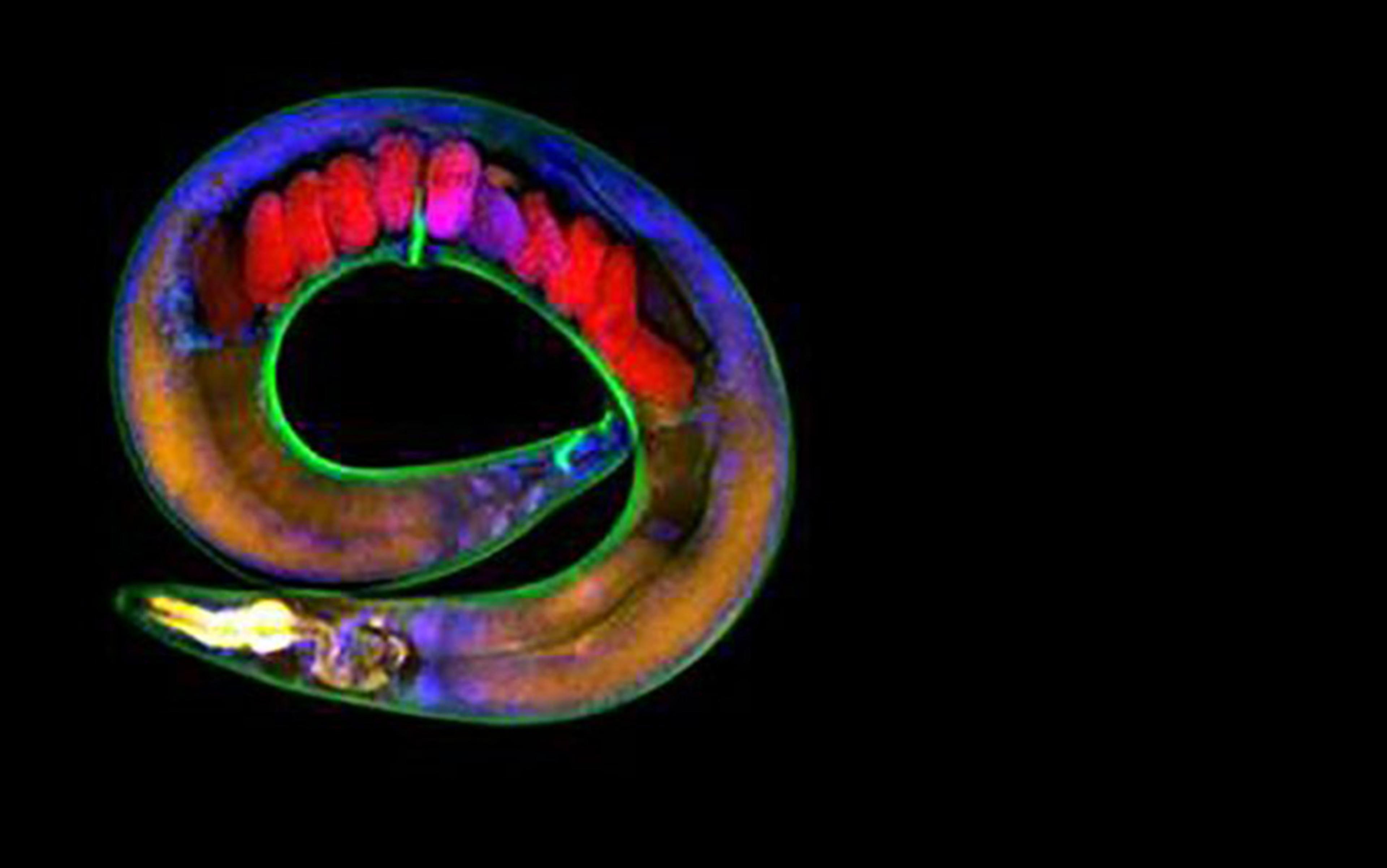When thousands of starlings swoop and swirl in the evening sky, creating patterns called murmurations, no single bird is choreographing this aerial ballet. Each bird follows simple rules of interaction with its closest neighbours, yet out of these local interactions emerges a complex, coordinated dance that can respond swiftly to predators and environmental changes. This same principle of emergence – where sophisticated behaviours arise not from central control but from the interactions themselves – appears across nature and human society.
Consider how market prices emerge from countless individual trading decisions, none of which alone contains the ‘right’ price. Each trader acts on partial information and personal strategies, yet their collective interaction produces a dynamic system that integrates information from across the globe. Human language evolves through a similar process of emergence. No individual or committee decides that ‘LOL’ should enter common usage or that the meaning of ‘cool’ should expand beyond temperature (even in French-speaking countries). Instead, these changes result from millions of daily linguistic interactions, with new patterns of speech bubbling up from the collective behaviour of speakers.
These examples highlight a key characteristic of highly interconnected systems: the rich interplay of constituent parts generates properties that defy reductive analysis. This principle of emergence, evident across seemingly unrelated fields, provides a powerful lens for examining one of our era’s most elusive mysteries: how the brain works.
The core idea of emergence inspired me to develop the concept I call the entangled brain: the need to understand the brain as an interactionally complex system where functions emerge from distributed, overlapping networks of regions rather than being localised to specific areas. Though the framework described here is still a minority view in neuroscience, we’re witnessing a gradual paradigm transition (rather than a revolution), with increasing numbers of researchers acknowledging the limitations of more traditional ways of thinking.
Complexity science is an interdisciplinary field that studies systems composed of many interacting components whose collective behaviours give rise to collective properties – phenomena that cannot be fully explained by analysing individual parts in isolation. These systems, such as ecosystems, economies or – as we will see – the brain, are characterised by nonlinear dynamics, adaptability, self-organisation, and networked interactions that span multiple spatial and temporal scales. Before exploring the ideas leading to the entangled brain framework, let’s revisit some of the historical developments of the field of neuroscience to set the stage.
In 1899, Cécile and Oskar Vogt, aged 24 and 29 respectively, arrived in Berlin to establish the Neurological Centre, initially a private institution for the anatomical study of the human brain that in 1902 was expanded to the Neurobiological Laboratory, and then the Kaiser Wilhelm Institute for Brain Research in 1914. Cécile Vogt was one of only two women in the entire institute. (In Prussia, until 1908, women were not granted access to regular university education, let alone the possibility to have a scientific career.) She obtained her doctoral degree from the University of Paris in 1900, while her husband Oskar obtained a doctorate for his thesis on the corpus callosum from the University of Jena in 1894.
In 1901, Korbinian Brodmann, who had concluded his doctorate in Leipzig in 1898, joined the group headed by the Vogts and was encouraged by them to undertake a systematic study of the cells of the cerebral cortex using tissue sections stained with a new cell-marking method. (The cortex is the outer brain surface with grooves and bulges; the subcortex comprises other cell masses that sit underneath.) The Vogts, and Brodmann working separately, were part of a first wave of anatomists trying to establish a complete map of the cerebral cortex, with the ultimate goal of understanding how brain structure and function are related. In a nutshell, where does a mental function such as an emotion reside in the brain?
Neurons – a key cell type of the nervous system – are diverse, and several cell classes can be determined based on both their shape and size. Researchers used these properties, as well as spatial differences in distribution and density, to define the boundaries between potential sectors. In this manner, Brodmann subdivided the cortex into approximately 50 regions (also called areas) per hemisphere. The Vogts, in contrast, thought that there might be more than 200 of them, each with its own distinguishing cytoarchitectonic pattern (that is, cell-related organisation).
It is an idea that comes close to being an axiom in biology: function is tied to structure
Brodmann’s map is the one that caught on and stuck, likely because neuroanatomists opposed too vigorous a subdivision of the cortex, and today students and researchers alike still refer to cortical parts by invoking his map. Although relatively little was known about the functions of cortical regions at the time, Brodmann believed that his partition identified ‘organs of the mind’ – he was convinced that each cortical area subserved a particular function. Indeed, when he joined the Vogts’ laboratory, they had encouraged him to try to understand the organisation of the cortex in light of their main thesis that different cytoarchitectonically defined areas are responsible for specific physiological responses and functions.
There is a deep logic that the Vogts and Brodmann were following. In fact, it is an idea that comes close to being an axiom in biology: function is tied to structure. In the case at hand, parts of the cortex that are structurally different (contain different cell types, cell arrangements, cell density, and so on) carry out different functions. In this manner, they believed they could understand how function is individuated from a detailed characterisation of the underlying microanatomy. They were in search of the functional units of the cortex – where the function could be sensory, motor, cognitive and so on.
Unlike other organs of the body that have more clear-cut boundaries, the cortex’s potential subdivisions are not readily apparent at a macroscopic level. One of the central goals of many neuroanatomists in the first half of the 20th century was to investigate such ‘organs of the mind’ (an objective that persists to this day). A corollary of this research programme was that individual brain regions – say, Brodmann’s area 17 in the back of the brain – implemented specialised mechanisms, in this case related to processing visual sensory stimuli. Therefore, it was vital to understand the operation of individual parts since the area/region was the rightful mechanistic unit to understand how the nervous system works.
Neuroscientists’ interest in brain regions was motivated by the notion that each region executes a particular function. For example, we could say that the function of the primary visual cortex is visual perception, or perhaps a more basic visual mechanism, such as detecting ‘edges’ (sharp light-to-dark transitions) in images. The same type of description can be applied to other sensory and motor areas of the brain. This exercise becomes considerably less straightforward for brain areas that are much less sensory or motor, as their workings become exceedingly difficult to determine and describe. Nevertheless, in theory, we can imagine extending the idea to all parts of the brain. The result of this endeavour would be a list of area-function pairs: L = {(A1, F1), (A2, F2), … , (An, Fn)}, where areas A implement functions F.
There is, however, a serious problem with this endeavour. To date, no such list has been systematically generated. Indeed, current knowledge strongly suggests that this strategy will not yield a simple area-function list. What may start as a simple (A1, F1) pair, is gradually revised as research progresses, and eventually grows to include a list of functions, such that area A1 participates in a series of functions F1, F2, … , Fk. From a basic one-to-one A1 → F1 mapping, the picture evolves to a one-to-many mapping: A1 → {F1, F2, … , Fk}.
If the mapping between structure and function is not one-to-one, then what kind of system is the brain? This is the question the entangled brain concept sets out to tackle. It’s useful to consider two types of information: anatomical and functional. Let’s start with the brain’s massive combinatorial anatomical connectivity. Neurons are constantly exchanging electrochemical signals with one another. Signalling between them is aided by physical cell extensions, called axons, that protrude beyond the cell body for distances from less than 1 mm to around 15 mm in the central nervous system. Axons travelling longer distances typically bundle together along what are called white-matter tracts to distinguish them from tissue composed of neuronal cell bodies, which is called grey matter. Anatomical connectivity, then, can be viewed as a system of roads and highways that supports cell signalling in the brain.
While most connections are local, the brain also maintains an impressive network of medium- and long-distance pathways. To give a rough sense of the dimensions involved, axonal lengths within local brain circuits (such as those within a single Brodmann area) have lengths from less than 1 mm to just under 1 cm. Connections between adjacent and nearby regions can extend between 0.5 to 4 cm, and connections between areas in different lobes, such as between the frontal and the occipital lobes, can reach 15 cm or more.
Although details vary across mammalian species, there’s evidence that the brains of macaque monkeys (a species that has a brain organisation resembling that of humans) are densely interconnected. For example, when scientists looked at any two regions in the cortex, they found that about 60 per cent of the time there’s a direct connection between them (although the strength of the pathway decreases between regions that are farther apart). Notably, the cortex organises medium- and long-distance communication through special regions that act like major transportation hubs, routing and coordinating signals across the entire cortex, much like how major airports serve as central connection points in the global air transportation network.
But that’s just part of the story. Beyond the extensive interconnections found in the cortex, there are multiple ‘connectional systems’ that weave together regions even further. The entire cortex connects to deeper brain structures. We can think of the brain as having distinct sectors. Simplifying somewhat, these are the cortex, the subcortical parts that are physically beneath the cortex in humans, and the brainstem. In the 1980s, it became clear that the cortex and subcortex are part of extensive connectional loops – from cortex to subcortex back to cortex. We now know that the multiple sectors are amply interlinked. What is more, a subcortical structure such as the thalamus, viewed in the past as a relatively passive steppingstone conveying signals to the cortex, is so sweepingly interconnected with the entire cortex that it is perhaps better to think in terms of a cortical-thalamic system. Even subcortical areas believed to mainly control basic functions, like the hypothalamus, which regulates hunger and body temperature among others, have widespread connections throughout the brain. This creates an incredibly intricate connectional web where signals can travel between disparate parts through multiple routes, hence the idea of ‘combinatorial’ connectivity.
What are the implications of the connectional organisation of the brain? The dense nexus of pathways allows for remarkable flexibility in how the brain processes information and controls behaviour. Signals of all types can be exchanged and integrated in multiple ways. All this potential mixing strongly challenges how we traditionally think of the mind and brain in terms of simplistic labels such as ‘perception’, ‘cognition’, ‘emotion’ and ‘action’. I will return to this point later, but the standard view is further challenged by a second principle of brain organisation: highly distributed functional coordination.
Groups of neurons that fire in a coherent fashion indicate that they are functionally interrelated
The Roman Empire’s roads, critical to its success, were extensive enough to circle the globe about twice over. In addition to obvious military applications, the road network supported trade, as well as cultural and administrative integration. These economic and cultural relationships and coordination between disparate parts of the empire were sustained by the incredible physical infrastructure known as the cursus publicus. Likewise, in the brain we need to move beyond the anatomical domain (the roads) to functional properties (such as economic and cultural relationships between different parts of the Roman Empire), all the more because neuroscientists themselves often focus too much on anatomical features.
In the brain, functional relationships between neuronal signals are detected across multiple spatial scales – from the local scale of neurons within a brain area to larger scales involving signals originating from the grey matter of different lobes (such as the frontal and parietal lobes, many centimetres apart). By signals, we mean the electrical activity of neurons that is directly recorded via microelectrodes inserted into grey matter (ie, neuronal tissue), measured indirectly when using functional magnetic resonance imaging (fMRI) in humans, or possibly via other measurement techniques.
What kinds of functional relationships are detected? An important one is that signals from different sites exhibit synchronised neuronal activity. This is notable because groups of neurons that fire in a coherent fashion indicate that they are functionally interrelated, and potentially part of a common process. Different types of signal coordination are believed to reflect processes such as attention and memory, among others. Additional types of relationships are detected mathematically, too, such as whether the strength of the response in one brain area is related to the temporal evolution of signals in a disparate location. In the brain, we identify signal relationships that are indicators of joint functions between regions, much like detecting cultural exchanges between separate parts of the Roman Empire via evidence of shared artefacts or language patterns.
When signals are measured from two sites within a local patch (say, a few millimetres across), it is not too surprising to find notable functional relationships between them (eg, their neuronal activity is correlated), as neurons likely receive similar inputs and are locally connected. Yet, we also observe functional relationships between neuronal signals from locations that are situated much farther apart and, critically, between brain parts that are not directly anatomically connected – there is no direct axonal connection between them.
How does this happen? There is evidence that signal coordination between regions depends more on the total number of possible communication routes between them than on the existence of direct connections between points A and B. For example, although regions A and B are not anatomically connected, they both connect to region C, which thus serves as a bridge between them. Even more circuitous paths can unite A and B, much like flying between two cities that have no direct flights and require multiple layovers. In such a manner, the brain creates functional partnerships that take advantage of all possible ways through its intricate pathways. This helps explain how the brain can be so remarkably flexible, sustaining different partnerships between regions depending on what we’re doing, thinking or feeling at any given moment.
When we consider the highways traversing the brain and how signals establish behaviourally relevant relationships across the central nervous system, we come to an important insight. In a highly interconnected system, to understand function, we need to shift away from thinking in terms of individual brain regions. The functional unit is not to be found at the level of the brain area, as commonly proposed. Instead, we need to consider neuronal ensembles distributed across multiple brain regions, much like the murmuration of starlings forms a single pattern from the collective behaviour of individual birds.
There are many instances of distributed neuronal ensembles. Groups of neurons extending over cortical (say, prefrontal cortex and hippocampus) and subcortical (say, amygdala) regions form circuits that are important for learning what is threatening and what is safe. Such multiregion circuits are ubiquitous; fMRI studies in humans have shown that the brain is organised in terms of large-scale networks that stretch across the cortex as well as subcortical territories. For example, the so-called ‘salience network’ (suggested to be engaged when significant events are encountered) spans brain regions in the frontal and parietal lobes, among others, and can also be viewed as a neuronal ensemble.
Whether we consider ensembles in the case of brain circuits or large-scale networks, the associated neuronal groupings should be viewed as strongly context dependent and dynamic. That is to say, they are not fixed entities but instead form dynamically to meet current situational requirements. Accordingly, they will dynamically assemble and disassemble as per behavioural needs. The implication of this view is that whereas brain regions A, B and C might generally be active together in dealing with a specific type of behaviour, in some contexts, we will also observe an ensemble that encompasses region D, or instead the ensemble {A, C, D} that meets slightly different requirements. In all, neuronal ensembles constitute an extremely malleable functional unit.
Think of how an orchestra works during a complex piece of music. The string section might split into different groups, with some violins joining the woodwinds for one musical phrase while others harmonise with the cellos. Later, these groupings shift completely for a different passage. The brain works in a related way: rather than recruiting fixed regions, it forms flexible aggregations that assemble and disassemble based on what we’re doing, thinking or feeling. This builds on what we learned about the brain’s extensive physical connections and the coordinated activity across regions. These features make the formation of ensembles possible.
Brain regions can participate in multiple networks simultaneously and shift their roles as needed
As is common in science, these ideas have a long genealogy. In 1949, the Canadian psychologist Donald Hebb proposed that the brain’s ability to generate coherent thoughts derives from the spatiotemporal orchestration of neuronal activity. He hypothesised that a discrete, strongly interconnected group of active neurons called the cell assembly represents a distinct mental entity, such as a thought or an emotion. Yet, these ideas have taken a long time to mature, not least due to technical limitations in measuring signals simultaneously across the brain, and the relative insularity of experimental neuroscience from other disciplines, such as computer science, mathematics and physics.
Just as a symphony emerges from both the individual instruments and how they play together, brain function emerges from both the regions themselves and their dynamic interactions. Scientists are finding that we can’t understand complex mental processes by studying individual brain regions in isolation, any more than we could understand a symphony by listening to each instrument separately.
What’s particularly fascinating is that these brain assemblages overlap and change over time. Just as a violin might be part of the string section in one moment and join a smaller ensemble in the next, brain regions can participate in multiple networks simultaneously and shift their roles as needed. But note that, in this view, even brain networks aren’t seen as constituted of fixed sets of regions; instead, they are dynamic coalitions that form and dissolve based on the brain’s changing needs. This flexibility helps explain how the brain can support such a wide range of complex behaviours using a limited number of regions.
Categories such as perception, cognition, action, emotion and motivation are not only the titles of introductory textbooks, but reflect how psychologists and neuroscientists conceptualise the organisation of the mind and brain. They seek to subdivide the brain into territories that have preferences for processes that support a specific type of mental activity. Some parts handle perception, such as the back of the head and its involvement in vision, or the front of the brain and its role in cognition. And so on. The decomposition of the mind-brain adopted by many neuroscientists follows an organisation that is called modular. Modularity here refers to the idea that the brain consists of specialised, relatively independent components or modules that each handle specific mental functions, much like distinct parts in a machine that work together but perform separate operations.
Yet, a modular organisation, popular as it is among neuroscientists, is inconsistent with the principles of the anatomical and functional neuroarchitecture discussed here. The brain’s massive combinatorial connectivity and highly distributed functional coordination defy clean compartmentalisation. The extensive bidirectional pathways spanning the entire brain create crisscrossing connectional systems that dissolve potential boundaries between traditional mental domains (cognition, emotion, etc).
Anxiety, PTSD, depression and so on should be viewed as system-level entities
Brain regions dynamically affiliate with multiple networks in a context-dependent manner, forming coalitions that assemble and disassemble based on current demands. This interactional complexity means that functions aren’t localised to discrete modules but emerge from decentralised coordination across multiregion assemblies. The properties that emerge from these interactions cannot be reduced to individual components, making a strict modular framework inadequate for capturing the brain’s entangled nature.
Why is the brain so entangled, and thus so unlike human-engineered systems? Brains have evolved to provide adaptive responses to challenges faced by living beings, promoting survival and reproduction – not to solve isolated cognitive or emotional problems. In this context, even the mental vocabulary of neuroscience and psychology (attention, cognitive control, fear, etc), with origins disconnected from the study of animal behaviour, provides problematic theoretical pillars. Instead, approaches inspired by evolutionary considerations provide better scaffolds to sort out the relationships between brain structure and function.
The implications of the entangled brain are substantial for the understanding of healthy and unhealthy brain processes. It is common for scientists to seek a single, unique source of psychological distress. For example, anxiety or PTSD is the result of an overactive amygdala; depression is caused by deficient serotonin provision; drug addiction is produced by dopamine oversupply. But, according to the ideas described here, we should not expect unique determinants for psychological states.
Anxiety, PTSD, depression and so on should be viewed as system-level entities. Alterations across several brain circuits, spanning multiple brain regions, are almost certainly involved. As a direct consequence, healthy or unhealthy states should not be viewed as emotional, motivational or cognitive. Such classification is superficial and neglects the intermingling that results from anatomical and functional brain organisation.
We should also not expect to find a single culprit, not even at the level of distributed neuronal ensembles. The conditions in question are too heterogeneous and varied across individuals; they won’t map to a single alteration, including at the distributed level. In fact, we should not expect a temporally constant type of disturbance, as brain processes are highly context-dependent and dynamic. Variability in the very dynamics will contribute to how mental health experiences are manifested.
In the end, we need to stop seeking simple explanations for complex mind-brain processes, whether they are viewed as healthy or unhealthy. That’s perhaps the most general implication of the entangled brain view: that the functions of the brain, like the murmurations of starlings, are more complicated and more mysterious than its component parts.






